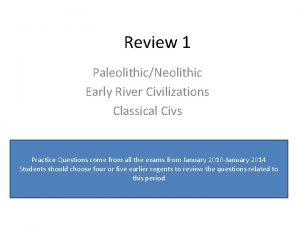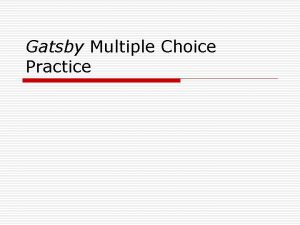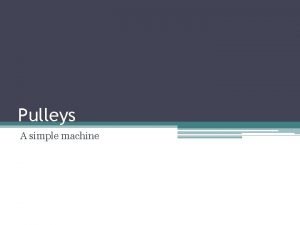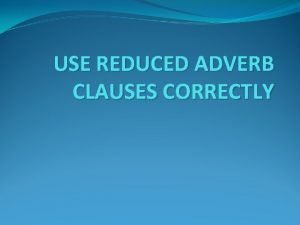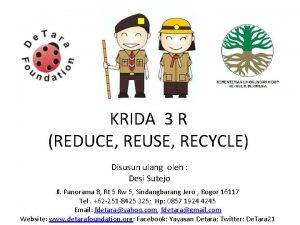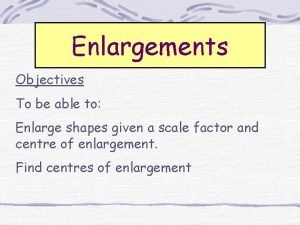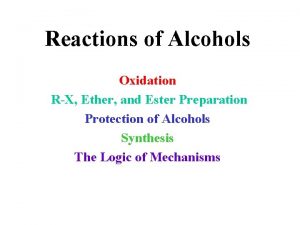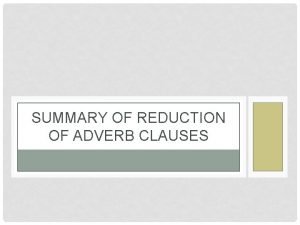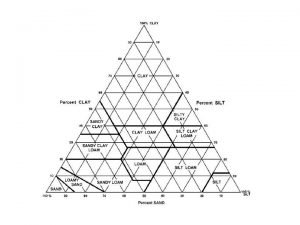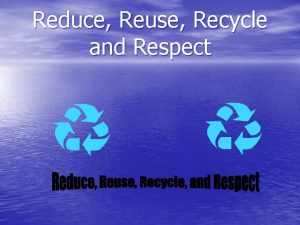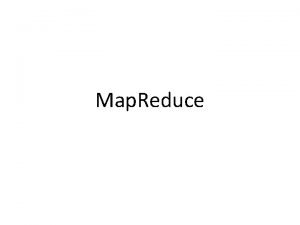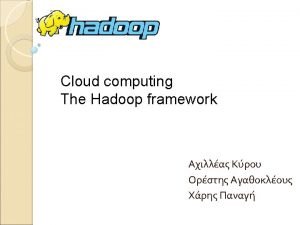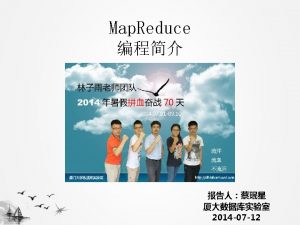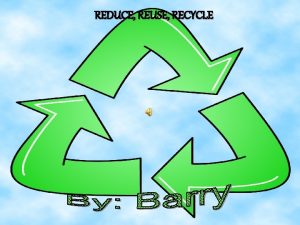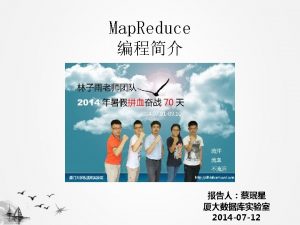5 Terracing This practice is applied to reduce










- Slides: 10

5. Terracing This practice is applied to reduce soil erosion and/or to retain run-off for moisture conservation, and consists of an earth embankment, or a combination ridge and channel, constructed across the field slope. Applies where: o Soil erosion by water is a problem o There is a need to conserve water o The soils and topography are such that terraces can be constructed with reasonable effort o A suitable outlet can be provided o Excess runoff is a problem

Terraces – constructed across the slope to intercept run-off

6. Cover crops Grasses, legumes, forbs, or other herbaceous plants established (usually directly drilled into seasonal crop) for winter cover and conservation purposes o Reduce erosion from wind and water o Increase soil organic matter o Manage excess nutrients in the soil profile o Promote biological N fixation o Increase biodiversity o Weed suppression o Provide supplement forage o Soil moisture management

Left: Drilling red fescue into winter wheat Right: Grass cover crop emerging through the wheat stubble

7. Nutrient management This practice involves managing the amount, placement, and timing of plant nutrients to obtain optimum yields and minimize the risk of surface and ground water pollution. Nutrient management may be used on any area of land where plant nutrients are applied to enhance yields and maintain or improve chemical and biological conditions of the soil. The source of plant nutrients may be from organic wastes (manure/slurry), commercial fertilizers, legumes or crop residue. The objective is to apply the proper amount of nutrients at the proper time to achieve the desired yield and minimize entry of nutrients into surface or ground waters.

Planning Nutrient Mangement involves the following considerations: o National, state and local (EU? ) water quality standards o Sources and forms of plant nutrients available to farmer o Amounts and timing of plant nutrients based upon soil testing, planned yield and growing season of target plants o Evaluate the use of crop rotations that enhance efficiency of nutrient utilization and improve soil tilth o Consider waste storage requirements and land area requirements for proper mangement of plant nutrients

The objective is to apply the proper amount of nutrients at the proper time to achieve the desired yield and minimize entry of nutrients into surface or ground waters.

Spreading slurry the smart way – injection using hoses preceeded by cutting disk (insert)

Cross section of soil after slurry injection

Livestock considerations : free access to a river = manure and urine direct to water + destruction of bank habitat. (Insert = Alternative watering solution)

